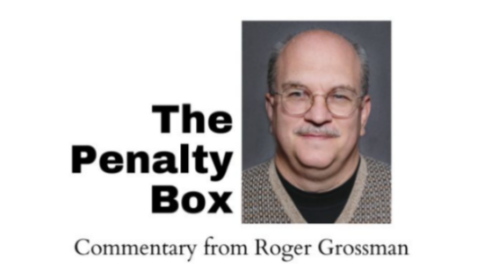By Roger Grossman
News Now Warsaw
Do high school sports feel any different to you today?
They probably don’t … at least not yet anyway.
Starting this week, the rules for high school athletes being allowed to transfer to a different school have changed.
It’s complicated if you don’t live in that world, but my objective today is to help you make sense of what the new rules are, and as fairly and as objectively as I can try to paint the picture of what it means to you, your favorite school and your favorite player moving forward.
Here is what the rules on transferring say now (from the exact language of the IHSAA after their executive meeting):
“During its annual review of the Member School By-Laws on Monday afternoon (May 5), the Board of Directors of the Indiana High School Athletic Association, Inc., formally adopted changes to Rule 19 regarding first-time transfers.
In short:
• Students whose first transfer is from an IHSAA Member School to another IHSAA Member School will maintain full eligibility if it occurs during their first six semesters of high school.
• Second and subsequent transfers and transfers from non-IHSAA Member Schools will be handled in a similar fashion to the way they have been in previous years.
• Students whose second transfer involves a return to the IHSAA Member School where they established their initial promotion eligibility will retain full eligibility within 365 days of their enrollment date at the previous school.”
Here is an example that gives you a realistic idea of how this works: Player “A” from school “X” just finished his freshman school year. For any reason, “A” can announce his intentions to transfer to a different school. “A” chooses school “Y” as his school for the next school year.
They enroll in school “Y” and transfer, The IHSAA registers it.
Then, let’s say, “A” decides they want to go back to their original school. The new rules allow “A” to return to school “X” if they make that decision within 365 days of when they enrolled in school “Y”.
All of that can happen and the player will maintain full eligibility. They don’t have to sit out any games and the IHSAA will have little or nothing to say about it.
Here is how this works practically:
Player “A” goes from “X” to “Y” because “A” sees potential to have personal and/or team success by transferring to a team that has a need at their position on a team that is poised to win a state championship.
Player “A” wins a state championship at school “Y”, but they graduate a talented and large senior class and their prospects for winning again aren’t nearly as good. Or they might just not like their second school as well.
Or they might hate the drive to their new school. Or they might not be making friends at their new school.
Or … whatever the reason.
Player “A” can then go back to the school they started at and it’s perfectly legal in the eyes of the IHSAA if they do declare their intention to transfer back within 365 days of when they transferred the first time.
Essentially, the old tale of the IHSAA investigating players transferring for athletic purposes is over.
So are the days of players being relegated to only playing on the new school’s junior varsity team for a season as a penalty for transferring.
If a player tries to transfer to a third school, then the IHSAA gets involved.
This might feel like a movement away from traditional high school athletics, and I think you can make a case for that.
But the truth is that the Indiana General Assembly was moving a bill through the Statehouse this past winter that would have made this new transfer process the law of the land. Not that they didn’t have better things to do, but the GA has been known to stray out of their lane.
It’s an angle of the “school choice” movement that I don’t think anyone saw coming. The wake of school vouchers and “state money following a student” rippled out to this.
So, we can’t completely blame the IHSAA for passing this. It was going to happen anyway.
Their only option would have been to say, ‘You want this? You do it because we aren’t going to.’
They chose not to go that route, and I don’t blame them for that.
The burning question is this: Is it the end of high school sports as we know it?
No. It isn’t. Not yet anyway.
Let’s see how this goes first. It may not be as bad as feared.
But it takes no imagination at all to see how this could go badly.
The key players in all of this, I believe, will be the school principals and superintendents.
They have the power and the responsibility to keep an eye on their coaches to make sure they don’t actively recruit and poach players from other schools. That would keep some level of integrity in the process.
But that will take courage on the part of school administrators.





